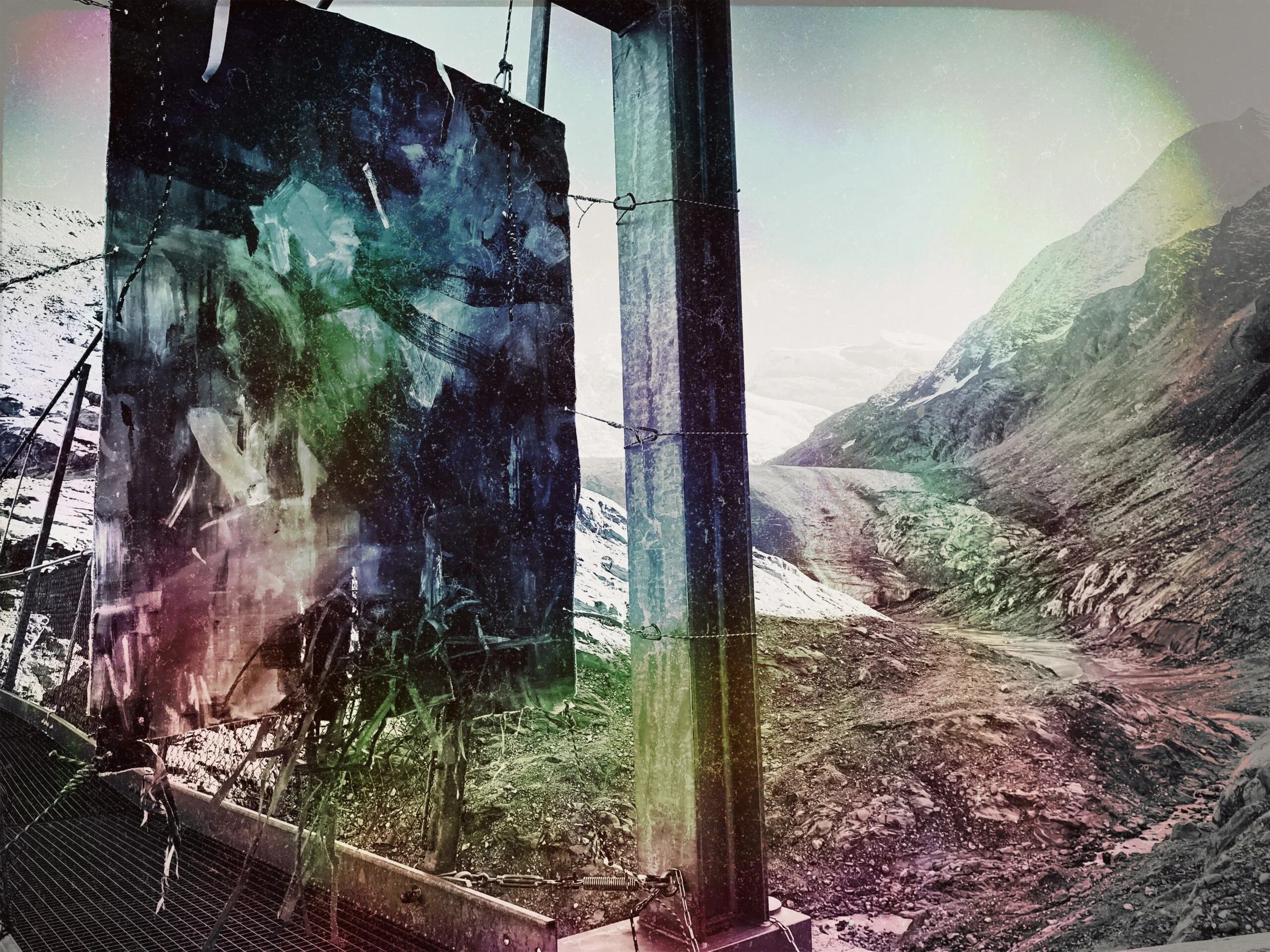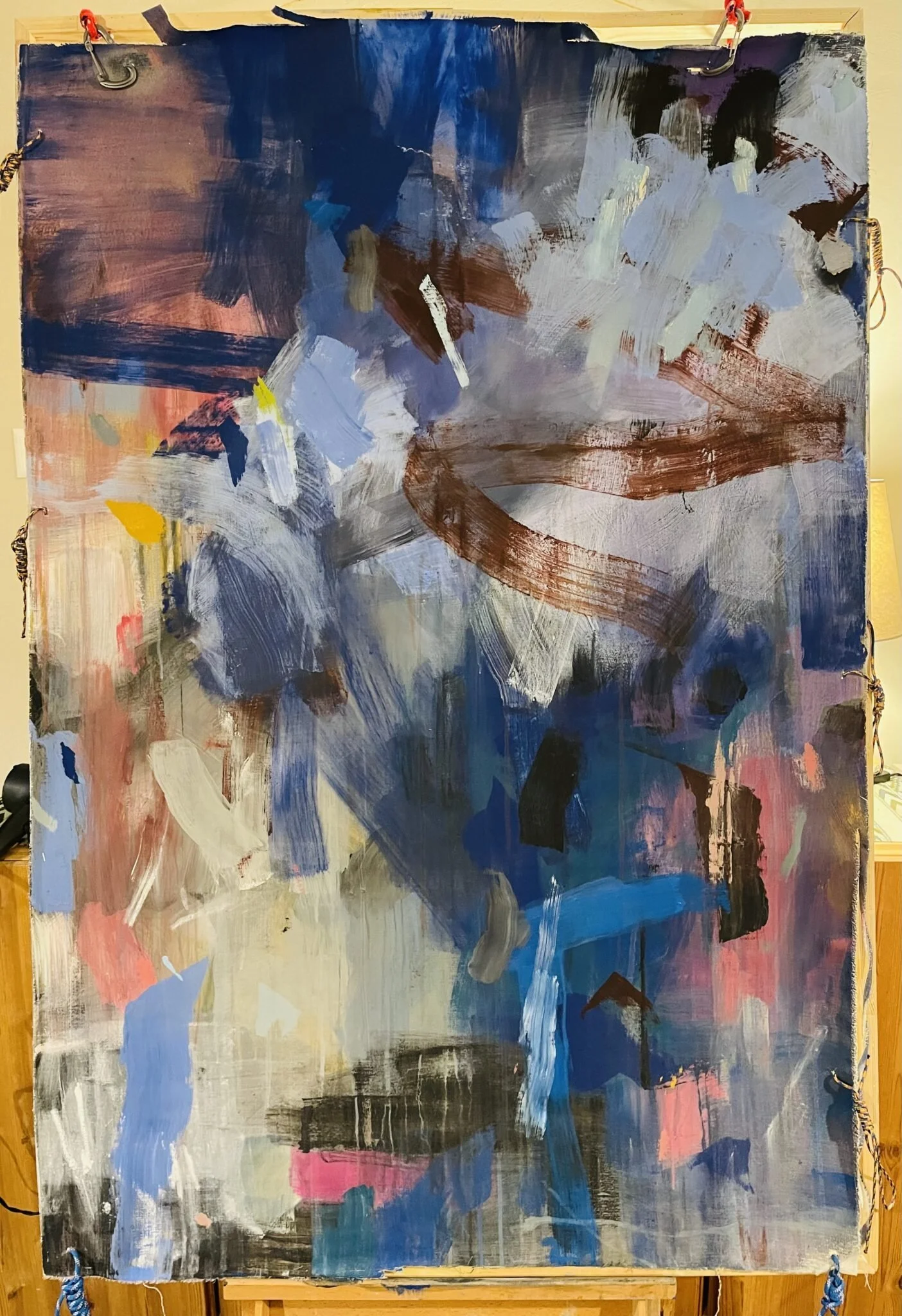Cover Image Flockhart K, Installing A Drawing Photo (2024)
Find a room, or space, that you have an affinity with and make a drawing which you can site in response to some of your thoughts about it.
On October 22nd I hiked to the Cobrassiere glacier in the Swiss Alps, where I live, to install a drawing I had created.
I have an affinity with this area. It is sacred to my mentality, yet in everyday life I lay a blanket over it’s presence, and I think of other things. Responsibilities, desires, mundane tasks. When faced with accountability my contribution to it’s preservation is somewhat acceptable, but still left wanting.
So I took this project as an opportunity to make a pilgrimage to the site. A 5 hour round hike, to acknowledge this natural entity and reflect on my action and contribution to the place and places I love the most.
My aim was to create a drawing that represents the erosion and loss of something valuable that takes place when we are busy doing other things.
I found that creating a painting to install at a site was different than creating for a conventional exhibition space.
I would normally be focusing on what was unfolding in front of me and adding or correcting from that perspective. But this painting was to be connected to it’s environment and I had to regard the back drop as an intrinsic element of the work. The use of texture, colour, composition, etc, extended out of the boundaries of the painting.
My aim was to create a painting that had a value to it. Because the point was to allow something I cared for to be eroded away. Initially though I was creating something with too much detail, too much content. And when I looked at it in respect of installing it at the glacier amongst this vast backdrop it looked independent from it’s surroundings, rather than organic to them.
I had to pull back, and I referred to an earlier note Id made about using prompts from nature.
Drawing
Texture from the rugged trails, to the smooth granite
Back and forth, side to side, layering strokes, switch back trails
Across the rocks ultramarine shadows, stone greys cold to touch
Washes of dried pink heather covering the heath
Occasional petal of a surviving alpine flower
A cerulean strip of glacial water
The painting became a series of drawn marks reminiscent of the area and the route there. And produced in a way to narrate endurance, struggle, striving, and something that’s not necessarily pretty as it is confronting.
The hike took 2 hours 30 from the cabane to the glacier base, and the last bridge to cross the gorge. The experience was parallel to the experience of making the painting. I started energised and with optimism, then grew weary and began to doubt my ability. At the end a determination arose to complete the task but there was a sort of blindness. An inability to see clearly what Id achieved. It was survival mode.
Only when the whole experience and project is handed over to history does it present it’s value.
“After 2 hours there is a sudden shift. The trail suddenly goes up. Changing from a meandering pace through a picturesque landscape, to a climb. It becomes more rocky and the air less hospitable.
As you reach the summit of this short but taxing climb there is an erie coldness.
No more heath and warm autumnal colours. You look out onto an awe inspiring carpet of rock and ice that rolls down the mountain. Heavy shadows shroud the base of the glacier.
There is a instinctive boundary that separates the walkable area from an intimidating zone”.
ERODING AND INSTALLING THE PAINTING
I wanted to use fixings akin to the environment. Carabiners and ropes are apparent here. The colours and very nature of the fixings gave an additional agency to the painting. They were considered as part of the paintings detailing.
To erode the painting I left it outside. The sun bleached out the colours and made them chalky, and the wet and cold petrified it. I wore away at the canvas with a sanding block, and frayed the edges. I pulled and ripped at it, and removed it from the stretcher. Once off the stretcher I had changed it’s environment and this made it more vulnerable. Painting on top of the weakened surface had a dramatically different effect.
I then strove to make repairs using woven blue plastic strips. These have been used on glaciers to attempt to protect them from erosion and climate changes. But this has since proved to be controversial as it too erodes and pollutes the site.
So I let my plastic fray and fail, and further destroy the aesthetic of my painting.
DEVELOPMENT
Time was a factor here. It was a big undertaking with a small time budget. I also had limited materials available to me. I had a vision and a theory to pursue, but I had to be realistic about realising the project. Putting something out there and then analysing to learn from afterwards became the concluding factor for me.
I was relieved to feel that I had make a positive entry into this exercise. My idea stood up to the aim. The painting and the installation had room for evolution, but as a gesture to show what I was trying to achieve I felt it did the job intended.
With experience behind me, I can see an opportunity to expand and improve my painting and how it’s placed as an installation. I would also like to experiment with different locations.
After learning so much about mark making and how to construct a large scale abstract painting, I need to go on a separate journey of refining the translation of environment to brush work. And then return to pursue this project further.
TECHNIQUE
I looked at Claire Kirkup, and Joan Mitchell.
After an initial analysis of their work I began to paint. I had noted ranges in tempo, colour combinations, composition, busy space, details, negative space, space for pause….
In the learning phase though I was prescriptive. The work was good, but it was “neat”. There has to be a truth to what you create. Something that comes from you that can’t come from someone else.
I realised that this truthfulness comes from the act of drawing. That this truth is founded in the initial registration of planning and executing.
The abstract marks I needed to make were not abstract in my view. They were derivative of the landscape. Real observations that came directly from it’s content.
And the energy, the tempo, had to come through me. Controlling and manipulating the pressure of the brush strokes, using full body movements or more subtle isolated wrist actions, enhanced their power.
There also had to be a freedom. Areas uncontrolled, uncomfortable. These gave contrast to the more considered marks. If there wasn’t such an approach the painting looked contrived and unrealistic. Like a scripted conversation, with no inflections or changes in tone of voice. Robotic and disengaging.
I had previously looked upon such marks as messy and amateurish, but then when I looked again with personal experience behind me, they seemed braved and liberating.
You have to do the work early. All the expression, emotion, and risks take it early. Then those big moves that come at the end. Large defining marks. Punctuating accents. They bring clarity and a sense of sobriety to the party.
I learnt there is a balance between preparing the foundations of the work, through colour and composition choice. And then allowing expression to unfold. Wether as enjoyable, successful marks or struggling, battling impressions that bruise the painting and your ego.
Building up an armoury of mark making, this process revealed more about its subject. So I felt like I was on the right trajectory with what I was creating.
Fig.2 Flockhart K, Installing A Drawing (2024)
“As I neared the end of the journey and the day was coming to a close I heard an anxious cry from across the gorge. The cry was extended and continuous and it was then that I saw a lone wolf scaling effortlessly up the steep rocky crag to the summit of the ridge line. To witness something so illuminating was a fitting end to my excursion. Albeit it had been spooked by our presence and my dog, it retreated very quickly back into the safety of it’s habitat. Something that is hallowed but always respectfully unattainable by me” And that was a fitting conclusion to my thoughts that day”.
List of Images
Cover Image Flockhart, K. (2024) Installing A Drawing Photo. [Acrylic on canvas] In possession of: The author: Volleges.
Fig.1 Film: Glacier Installation. (2024) Created by Flockhart, K. [iPhoto] Lourtier.
Fig.2 Flockhart, K. (2024) Installing A Drawing. [Acrylic on canvas] In possession of: The author: Volleges.

